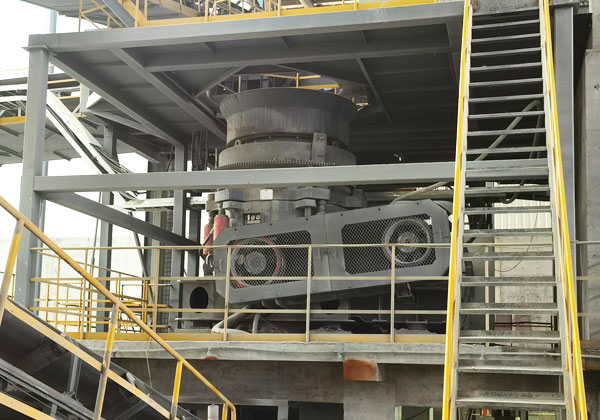The installation of a cone crusher in a quarry is a critical step that requires careful planning and precision to ensure the smooth operation of the entire crushing system. A cone crusher is essential in a quarry setting for secondary, tertiary, or even quaternary crushing, where large rocks are crushed into smaller, more manageable sizes. Proper installation plays a significant role in the crusher’s efficiency, longevity, and maintenance. This process typically involves several key steps, from site preparation to final testing.
The first step in installing a cone crusher is site preparation. The location should be chosen carefully, ensuring it provides enough space for the equipment and future maintenance activities. The foundation must be solid and capable of supporting the weight of the crusher and other equipment. If the site is on uneven terrain, leveling may be necessary. Additionally, proper drainage is crucial to avoid water accumulation around the crusher, which could cause rust or other forms of wear. Electrical power lines, hydraulic connections, and ventilation systems must also be accounted for during the installation.

Once the site is prepared, the next step is the assembly of the cone crusher. The crusher unit typically arrives in parts, including the main frame, the crushing head, and various other components. The main frame is usually bolted to the foundation, and the crusher head is carefully installed to ensure proper alignment. Proper alignment is essential, as any misalignment can lead to uneven wear or operational inefficiencies. The installation team must follow the manufacturer’s instructions closely, using specialized tools and equipment to secure each component precisely.
After the mechanical installation, the next step involves connecting the crusher to its power supply and hydraulic systems. A cone crusher requires a steady supply of electricity to power its motor and hydraulic pumps that control various functions, such as adjusting the gap between the crushing cone and the mantle. These systems must be connected and tested for leaks or any issues that could interfere with the crusher’s performance. Additionally, lubrication systems are installed to ensure that the crusher operates smoothly without excessive wear on its parts. Lubricating oil must be filtered, cooled, and pumped into the right places for optimal performance.
Once everything is installed and connected, the final stage is testing the cone crusher. This phase is crucial to ensure that the crusher functions properly under load and is producing the desired product. The testing process typically involves running the crusher without material for a short period to check for any operational issues. After that, material is slowly introduced to ensure the crusher is crushing efficiently and producing a consistent size of aggregate. Any adjustments needed, such as fine-tuning the hydraulic settings or adjusting the crusher’s gap, are made during this phase. Once the testing is complete, the crusher is ready for full-scale operation, and the team should implement a regular maintenance schedule to ensure its continued performance.
In conclusion, the installation of a cone crusher in a quarry is a detailed and precise process that requires proper planning, expert assembly, and thorough testing. From selecting the installation site to testing the equipment after installation, every step is crucial for the crusher’s performance and lifespan. By ensuring that each stage of the process is completed correctly, quarry operators can achieve optimal crushing efficiency and maintain a smooth operation.
